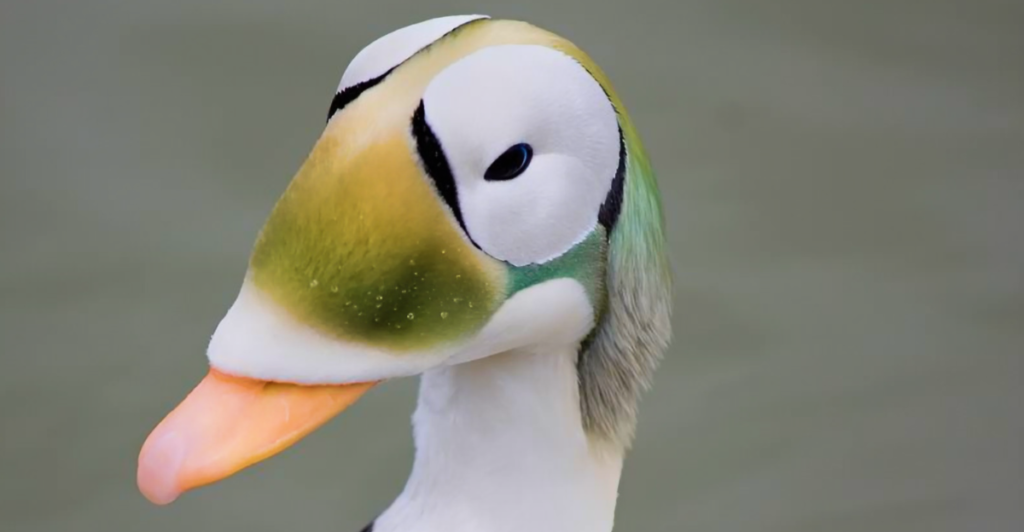
America’s wilderness is home to an incredible variety of ducks, each with its own unique traits and adaptations. Some are expert divers, while others are skilled foragers or long-distance migrators. These are twelve fascinating duck breeds that can be found in America’s wilderness.
1. Wood Duck
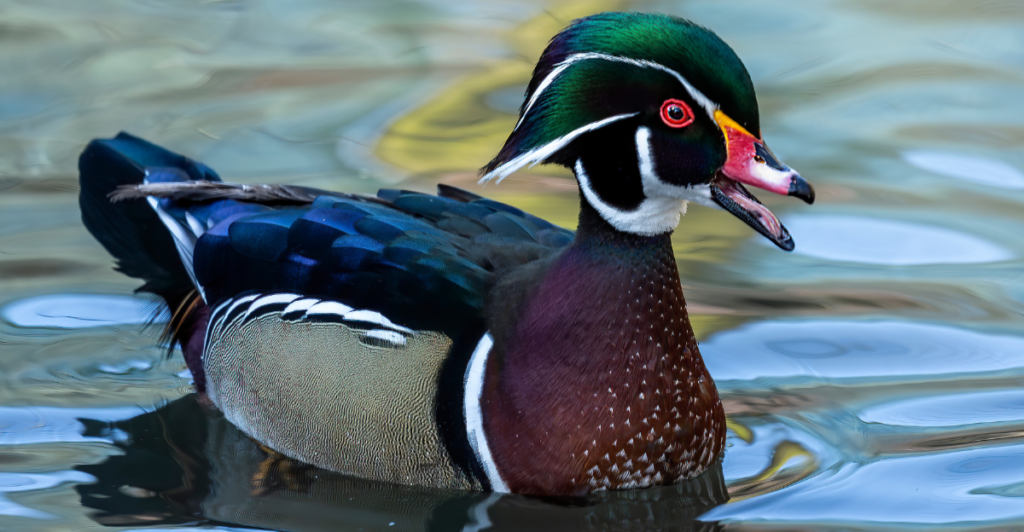
The Wood Duck is one of the most beautiful duck breeds on earth. It is a vibrant and colorful species that can be found in bottomland forests, swamps, freshwater marshes, and beaver ponds. These stunning creatures prefer to live in areas where open water alternates with dense vegetative cover, which allows them to hide and forage effectively. They mainly eat seeds, fruits, insects, and other arthropods.
2. Northern Pintail
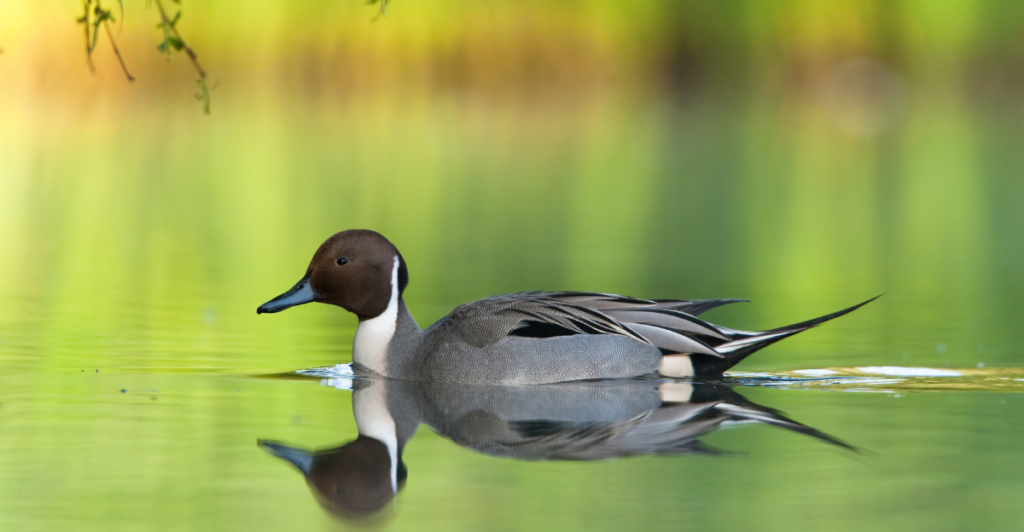
The Northern Pintail is known for its elegant appearance and long, pointed tail feathers. These ducks can be found across North America, Europe, and Asia. They live in a variety of habitats, including marshes, prairies, fresh ponds, lakes, and salt bays. During summer months, they are often found in prairies, farmlands, and northern tundra near bodies of water.
3. Green-winged Teal
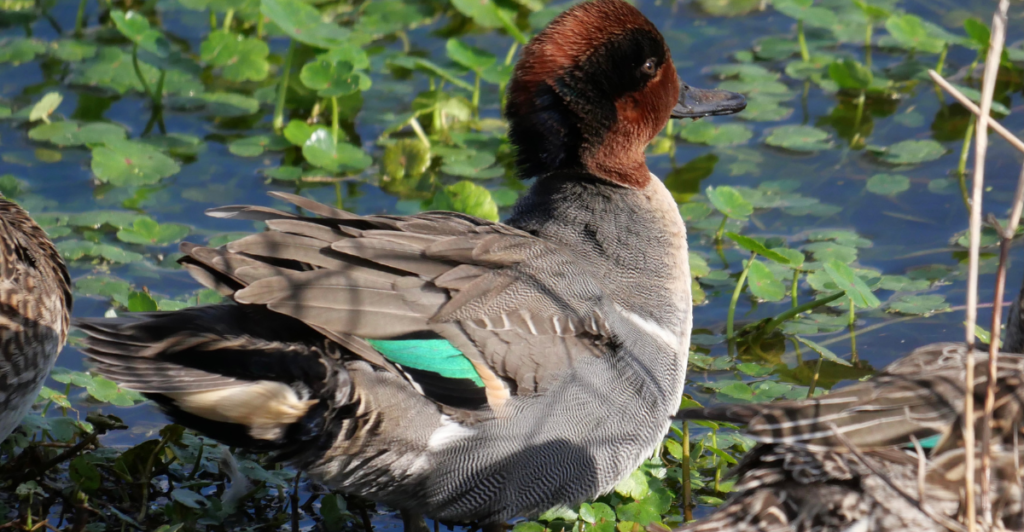
The Green-winged Teal is another common duck species that breeds in northern North America. They prefer shallow waters and small ponds during the breeding season, and their nests are usually found in grasses, sedge meadows, or underbrush cover.
4. Mallard

The Mallard is another common and recognizable duck species. These ducks can be found in a wide range of habitats, from the Arctic tundra to subtropical regions. They live in both fresh and salt-water wetlands, including parks, small ponds, rivers, lakes, and estuaries. They are omnivorous and eat a variety of plants and small animals.
5. American Black Duck
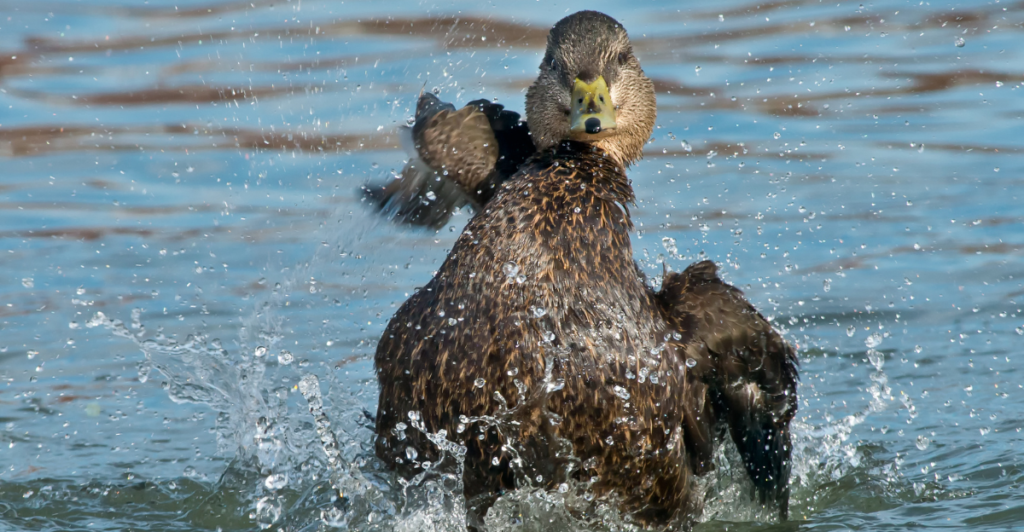
The American Black Duck is endemic to eastern North America which prefers freshwater and coastal wetlands. These ducks are found in tidal marshes, brackish marshes, estuaries, and the edges of backwater ponds and rivers. American Black Ducks are omnivorous, with a diet that includes wetland grasses, aquatic plants, mollusks, snails, and small fish.
6. Greater Scaup
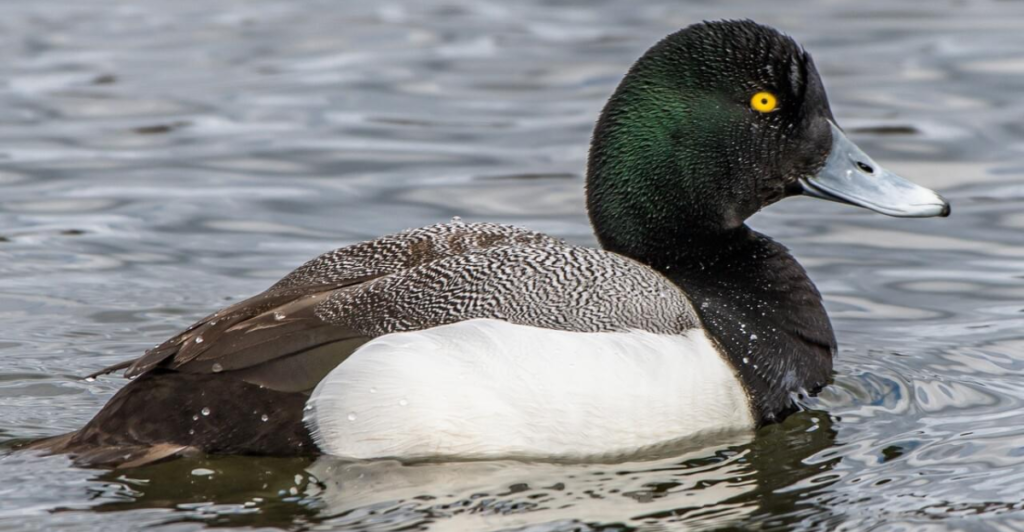
The Great Scaup is a skilled diver who is known for its distinctive blue bill. These ducks are often found around the Great Lakes and coastal areas during winter. Greater Scaups prefer deeper waters than some other duck species, which makes them less common in very shallow habitats. They are social birds that form large flocks during migration and winter.
7. Canvasback
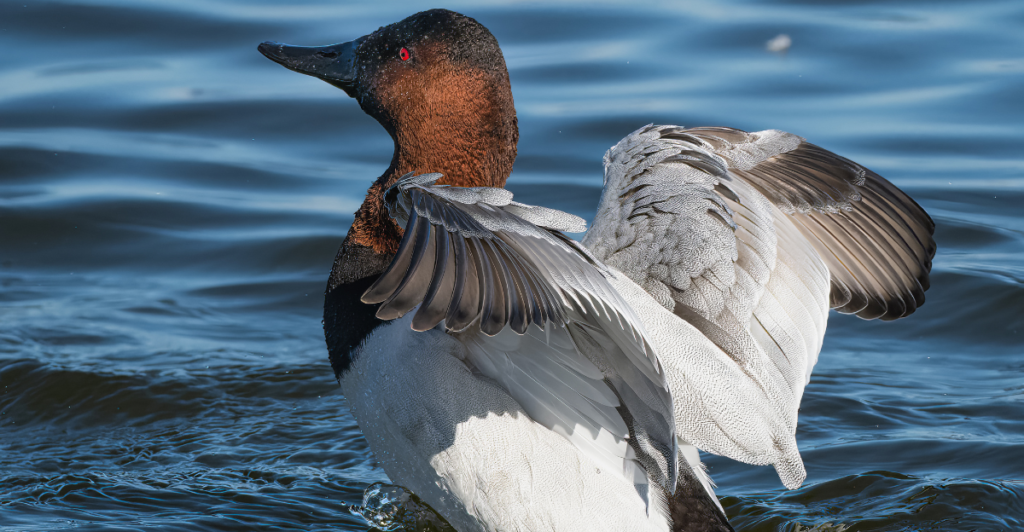
The Canvasback is the largest diving duck in North America. It is known for its red eyes and sloping forehead. These ducks are found in freshwater lakes and marshes across North America. They are excellent divers that feed on aquatic plants and small animals.
8. Hooded Merganser
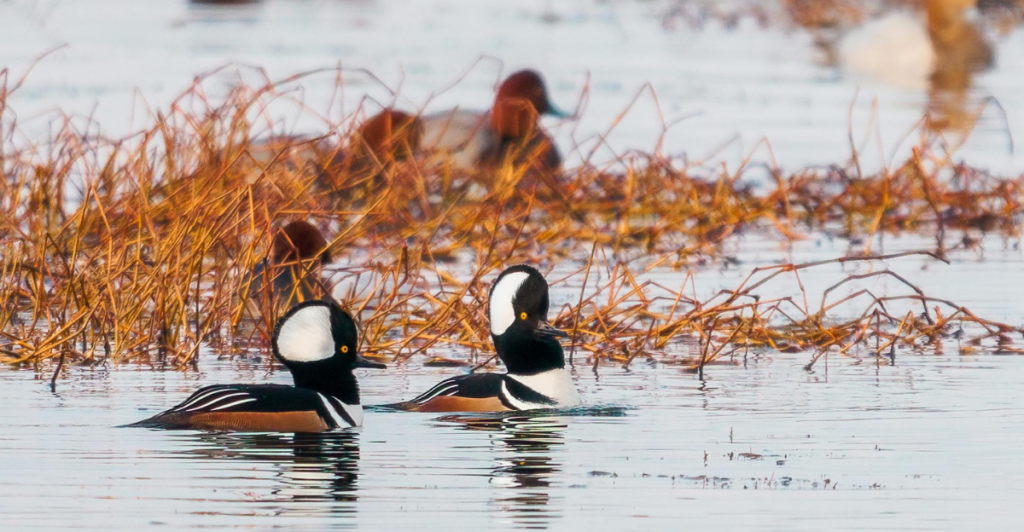
The Hooded Merganser is famous for its crested head, which resembles a medieval hood. These ducks are excellent divers and prefer forested areas for breeding. Hooded Mergansers are solitary birds, often found in smaller groups, and they nest in tree cavities or nest boxes. They feed on aquatic insects, crustaceans, and small fish.
9. American Wigeon
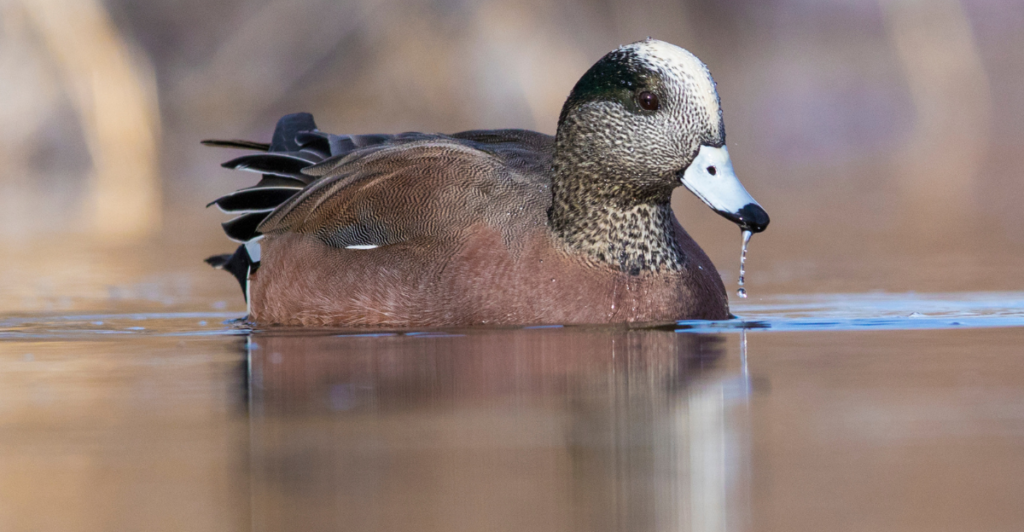
The American Wigeon has a green and white head and is often seen stealing food from other ducks! These gorgeous ducks are found in open wetlands and grasslands and prefer areas with shallow water and abundant vegetation. Their diet includes aquatic plants, seeds, and small invertebrates.
10. Gadwall

The Gadwall is a master of camouflage with its brownish-gray feathers, which allows it to blend into open wetlands. Gadwalls prefer ponds, lakes, and marshes with dense vegetation. They are social animals that form large flocks outside of the breeding season. Their diet consists mainly of aquatic plants and small invertebrates.
11. Ruddy Duck
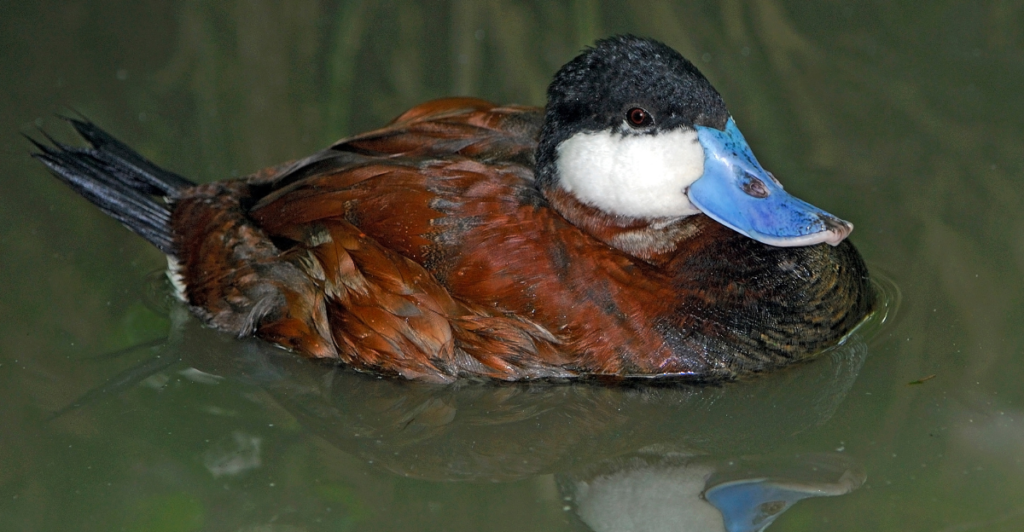
The Ruddy Duck is recognizable by its powder-blue bill and stiff tail. These ducks live in open water and marshes across North America. They are excellent divers, feeding on aquatic plants and small invertebrates. They are social birds that form large flocks during migration and winter.
12. Common Eider
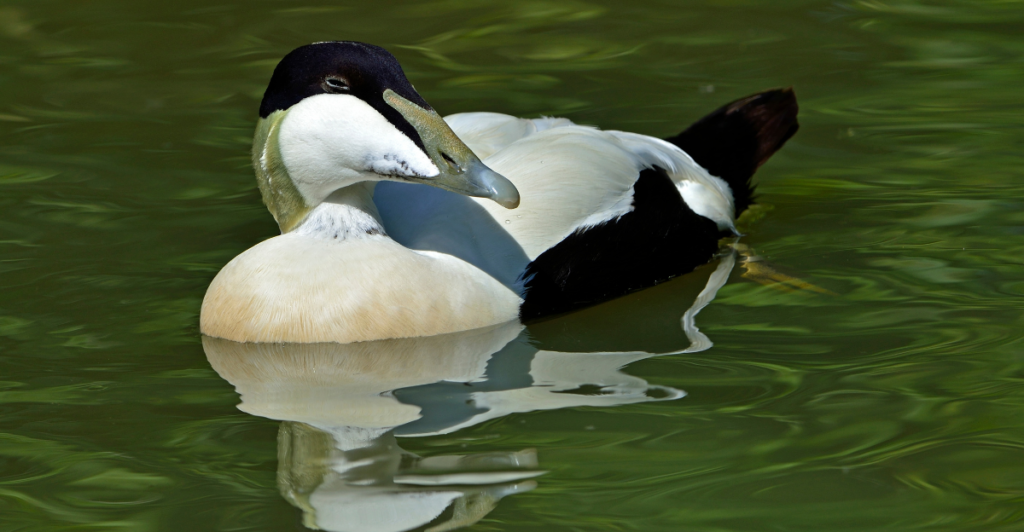
The Common Eider is the largest duck in North America, known for diving to feed on shellfish and other marine invertebrates. Eiders prefer colder regions and are often found in coastal areas and Arctic tundra. They are social birds that form large flocks during migration and winter.







